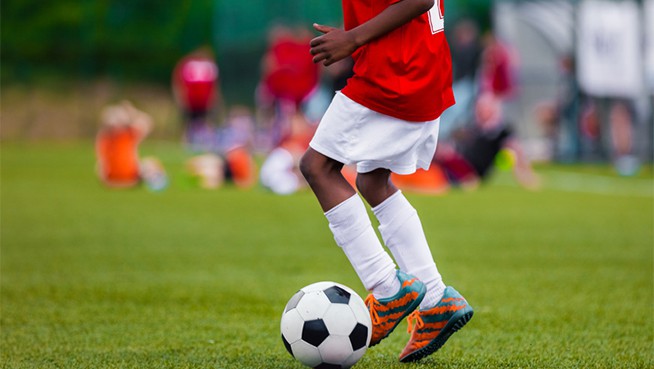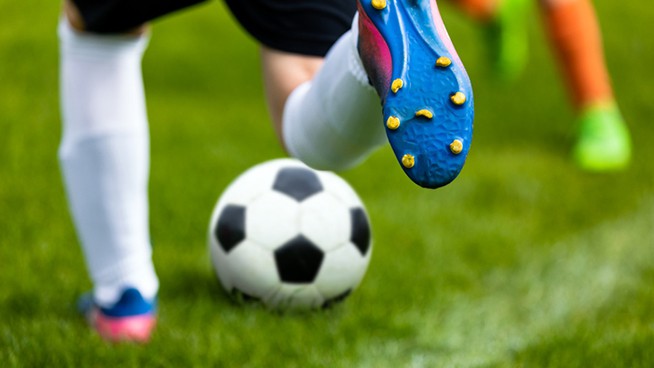Popular Softball Batting Tips That Don’t Work
In my years of playing, coaching and watching softball, I’ve noticed three softball batting tips that are often drilled into young players. Unfortunately, they do not work.
Let’s take a look at these misguided tips, review the problems with them and consider some better alternatives.
1. Squash the Bug
Problems:
- Causes players to put too much weight on their back leg through rotation.
- Causes players to lose power by preventing weight transfer at contact.
- Reduces bat control, causing early rotation in the hips and shoulders. Hands drag through the zone and the bat follows a generic path with each swing, regardless of where the ball is placed.
- Causes slow bat speed, since early shoulder rotation prevents the other muscles in the arm from helping the bat through the zone.
Do this instead: “Drive/push off your back leg” or “turn the front of your thigh toward the pitcher.”
2. One-Arm Drills with Bottom Hand
Advanced (approaching college age) batters have the skills, knowledge and strength to perform these drills. Younger batters do not. They reinforce “casting” or extending the elbow perpendicular to the pitcher instead of toward the pitcher.
Problems:
- Reduces bat control, as the bat moves in a circular motion. May develop strong pull hitters, but good pitchers can easily pitch around a dead-pull hitter.
- Increases strikeouts, since hands take a longer path to get to the ball.
- Forces batters to start swinging early and usually before they decide whether the pitch is a ball or a strike.
Do this instead: Focus on pushing through with your top hand. The bottom hand will find its place. If this is already a problem, loosen the grip of the bottom hand for drill work and allow the top hand to take control.
3. Swing Level
Players might have success making contact but have difficulty when trying to hit for power.
Problems:
- Does not produce spin. Balls with spin move faster on the ground or in the air. Line drives with backspin tend to climb as they travel, helping the ball reach the outfield or even clear a fence. Fast spinning ground balls have a better chance to get past the infield and take more bad hops, making them harder to handle.
- Bigger, stronger girls can overpower the ball and have power with a level swing. Smaller players, however, need the spin to get the same effect.
Do this instead: Make contact with your hands above the ball, creating a slight angle. This minimizes swinging at high pitches. Aim for the top third of the ball. If you hit where you are aiming, you will hit hard-to-handle ground balls. If you miss slightly under, you may hit hard line drives. This cue also reduces pop-ups.
RELATED: Struggling at the Plate? Try These Easy Hitting Drills
RECOMMENDED FOR YOU
MOST POPULAR
Popular Softball Batting Tips That Don’t Work
In my years of playing, coaching and watching softball, I’ve noticed three softball batting tips that are often drilled into young players. Unfortunately, they do not work.
Let’s take a look at these misguided tips, review the problems with them and consider some better alternatives.
1. Squash the Bug
Problems:
- Causes players to put too much weight on their back leg through rotation.
- Causes players to lose power by preventing weight transfer at contact.
- Reduces bat control, causing early rotation in the hips and shoulders. Hands drag through the zone and the bat follows a generic path with each swing, regardless of where the ball is placed.
- Causes slow bat speed, since early shoulder rotation prevents the other muscles in the arm from helping the bat through the zone.
Do this instead: “Drive/push off your back leg” or “turn the front of your thigh toward the pitcher.”
2. One-Arm Drills with Bottom Hand
Advanced (approaching college age) batters have the skills, knowledge and strength to perform these drills. Younger batters do not. They reinforce “casting” or extending the elbow perpendicular to the pitcher instead of toward the pitcher.
Problems:
- Reduces bat control, as the bat moves in a circular motion. May develop strong pull hitters, but good pitchers can easily pitch around a dead-pull hitter.
- Increases strikeouts, since hands take a longer path to get to the ball.
- Forces batters to start swinging early and usually before they decide whether the pitch is a ball or a strike.
Do this instead: Focus on pushing through with your top hand. The bottom hand will find its place. If this is already a problem, loosen the grip of the bottom hand for drill work and allow the top hand to take control.
3. Swing Level
Players might have success making contact but have difficulty when trying to hit for power.
Problems:
- Does not produce spin. Balls with spin move faster on the ground or in the air. Line drives with backspin tend to climb as they travel, helping the ball reach the outfield or even clear a fence. Fast spinning ground balls have a better chance to get past the infield and take more bad hops, making them harder to handle.
- Bigger, stronger girls can overpower the ball and have power with a level swing. Smaller players, however, need the spin to get the same effect.
Do this instead: Make contact with your hands above the ball, creating a slight angle. This minimizes swinging at high pitches. Aim for the top third of the ball. If you hit where you are aiming, you will hit hard-to-handle ground balls. If you miss slightly under, you may hit hard line drives. This cue also reduces pop-ups.
RELATED: Struggling at the Plate? Try These Easy Hitting Drills
[cf]skyword_tracking_tag[/cf]









